The Ultimate Guide to Solitaire Diamond Ring Settings
A breathtaking six-prong solitaire diamond ring with 1ct center stone.
Solitaire ring settings have been around for as long as rings have existed and they are currently the most popular style of ring designs in the market. But what are solitaire designs and why do so many people choose them for their engagement rings?
In this write up, you will find answers to the questions above and everything you need to know about solitaire settings! We will also reveal the pros and cons of solitaire ring designs and review some of the best solitaire engagement ring settings available.
Let’s jump right in…
Here is a list of topics we will be covering:
- What is a Solitaire Ring Setting?
- Pros And Cons of Solitaire Diamond Ring Settings
- Types of Solitaire Diamond Engagement Rings in the Market
- Solitaire vs Pave vs Halo Setting – What Are the Differences?
- Should You Choose a Solitaire Design For Your Engagement Ring?
- Where to Buy Solitaire Diamond Engagement Rings?
What is a Solitaire Ring Setting?
As the name suggests, a solitaire ring simply means that the setting only has a single stone mounted in the setting. The Tiffany setting which was created more than a century ago, is probably the most iconic image for solitaire diamond engagement rings.
In the jewelry trade, solitaire settings are also known as “prong settings” where 4 or 6 metal prongs are used to mount the center stone in place. Prongs can be rounded, clawed, pointed, v-shaped or even flat depending on the design of the ring.
Pros And Cons of Solitaire Diamond Ring Settings
Due to their simplicity in design, solitaire settings have a number of advantages over other types of settings. Here’s a list of pros and cons when it comes to buying a solitaire ring.
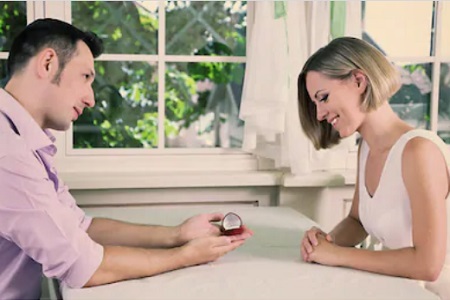
Advantages of a Solitaire Setting
• Makes center diamond the center of attention.
• Less expensive compared to other setting styles.
• Easier to care for and maintain cleanliness.
• Complements a wide variety of diamond shapes and sizes.
• Classic and timeless style that stays fashionable.
• Most settings allow more light to enter the diamond for better sparkle.
Disadvantages of a Solitaire Setting
• High prong settings can snag or catch onto things easily.
• Most solitaire settings leave areas of the girdle exposed.
• Cookie cutter designs that may look similar to each other.
Types of Solitaire Diamond Engagement Rings in the Market
As you can imagine, solitaire engagement rings come in a wide variety of styles and there are literally thousands of different designs in the market. Broadly speaking, they can be classified into 3 different types of categories: prong, bezel and tension.
#1 – Prong Setting for Solitaire Rings
Prong settings are by far the most common type of setting used in diamond engagement rings and it is based on a simple concept. Prongs, or claws, surround the girdle of the diamond to hold it securely in place and in an unobtrusive manner. This helps more light to enter the diamond for better brilliance and sparkle.
Check out some of the best classic solitaire ring designs below!
While solitaire rings are often known for their simplicity, there are also many creative solitaire designs that feature intricate details and delicate craftsmanship. Check out a couple of my favorite rings below…
#2 – Bezel Setting
A bezel setting surrounds the outline of the diamond with a metal band and fully protects the edges of the diamond. If you have an active lifestyle, this is the ideal choice of setting to create a smooth, snag-free ring mounting.
Most bezel designs offer a contemporary look and can help the diamond look bigger. If there are inclusions or blemishes near the edges of the diamond, they can also be conveniently covered up too.
#3 – Tension Setting
Tension settings are known for their unique appearance whereby the diamond seems to be magically floating between 2 metal arms. Basically, the tension setting acts as a loaded spring and holds the diamond tightly using tensile force.
Unlike most other traditional ring designs, there is no metal under the stone and this creates a really special look to the ring. Also, the lack of metal allows you to clean the diamond easily without fuss.
Best solitaire ring designs for tension settings.
Solitaire vs Pave vs Halo Setting – What Are the Differences?
To help you visualize the differences between different types of setting designs, let’s do a side by side comparison of the 3 most popular styles of engagement rings; solitaire, pave and halo settings.
With a solitaire engagement ring, the center diamond is the focus of the ring. In contrast, pave and halo settings utilize melee diamonds (small sized diamonds) for more bling and brilliance.
In the comparison above, I’ve selected basic designs for each of the styles (in 14k white gold) to give you an idea of how much they would cost in relation to each other. Feel free to click on the images to interact directly with the video listings.
Basically, a pave setting has melee diamonds mounted on the shanks leading up to the center stone while a halo has melee diamonds that surround the outline of the center stone. These options allow you to get more bling for your buck and create a “bigger diamond look”.
Should You Choose a Solitaire Design For Your Engagement Ring?
Readers often ask me questions like: “Should I choose a solitaire ring setting?”, “Would you recommend a pave or solitaire engagement ring design?” or even stuff like “Would a half carat diamond be big enough for a solitaire setting?”.
Questions like these are really subjective and it really depends on the personal preferences or type of lifestyle the recipient has. As discussed in the earlier section, the solitaire ring design has its pros and cons.
If you are absolutely clueless about your recipient’s preferences and taste, the safest design to buy would be a simple and plain 4 or 6 prong ring design. This is because these are evergreen designs that will go well with most types of fingers and fashion styles.
In order to find the perfect ring for your needs, my advice is to do your research on what the recipient likes and look around for ideas.
Where to Buy Solitaire Diamond Engagement Rings?
Classic knife-edge Tiffany style 6 prong diamond ring design.
Choosing where to buy your diamond ring would be one of the most important decisions of your shopping process. Let me warn you that there are both physical and online retailers who will overcharge you while offering inferior quality products.
As a consumer, the 2 most important things you need to look out for is a reliable grading certificate from GIA or AGS for the center diamond and craftsmanship quality in the ring setting.
Throughout my years in the industry, I’ve carefully vetted hundreds of diamond sellers to find out who’s the best and most reliable in the business. In fact, I had personally tested and bought a number of diamond rings from different vendors to review the entire shopping process.
Based on my experience, White Flash, James Allen and Brian Gavin are the top 3 places to shop for a solitaire diamond engagement ring. These are vendors that offer tangible data like videos and scope images to help you review diamond listings with indepth details.
On top of excellent customer service and risk-free shopping policies, these vendors also offer high quality workmanship for their settings and have very competitive prices. So, make sure you check them out for yourself and browse through the different ring designs that they offer!
With that, I hope you found this write up useful. What do you think of solitaire ring settings? Would you choose a solitaire design for your engagement ring? Leave a comment below to let me know!
Related Articles
Leave A Comment



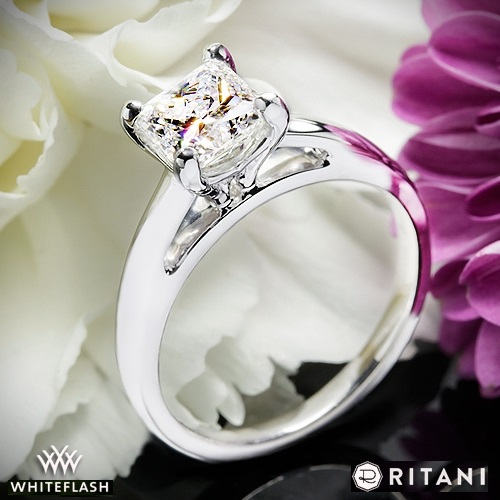
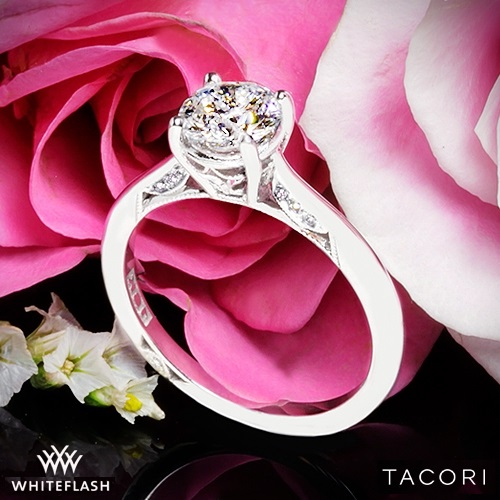
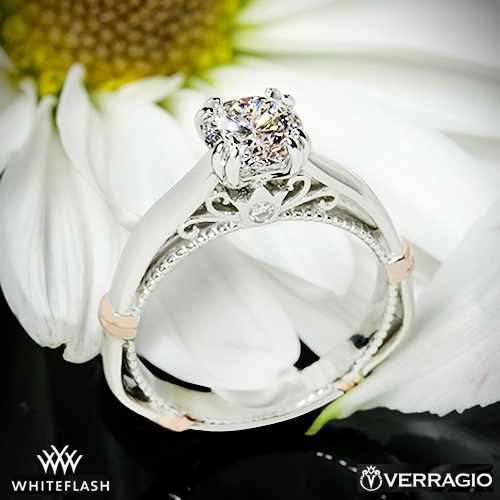
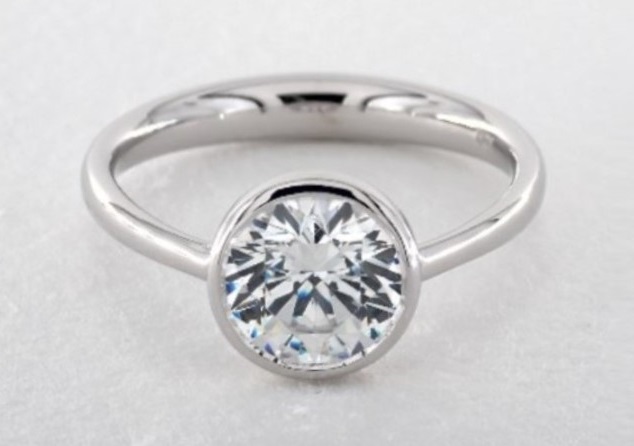
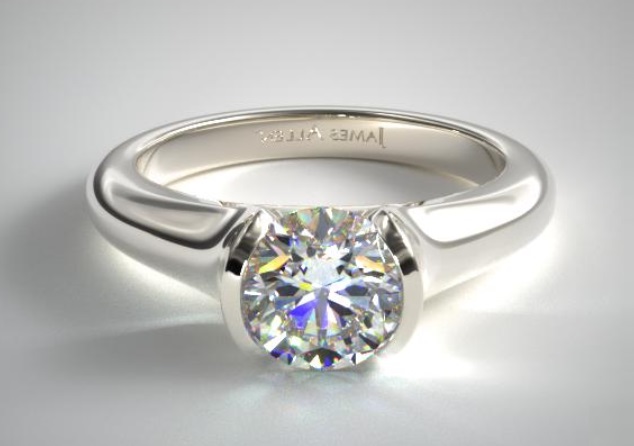

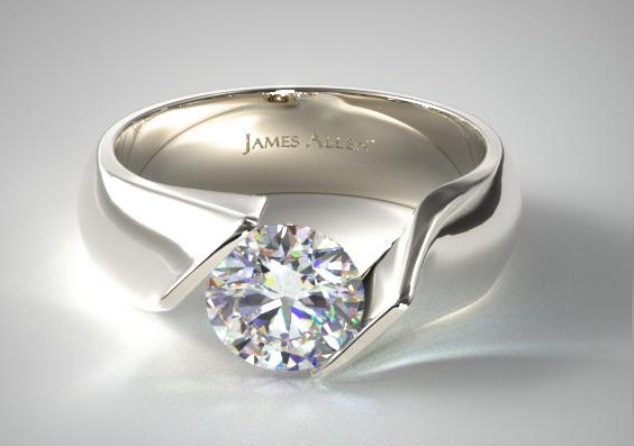
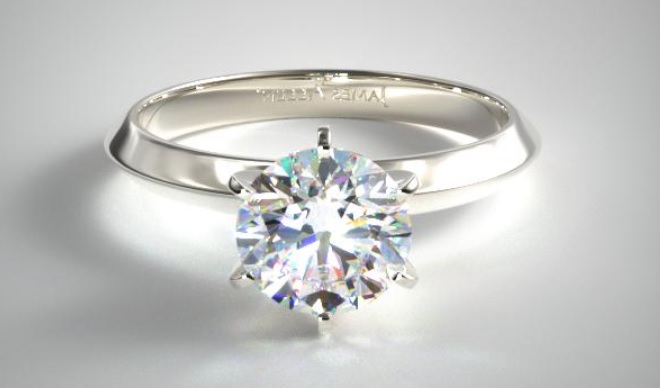
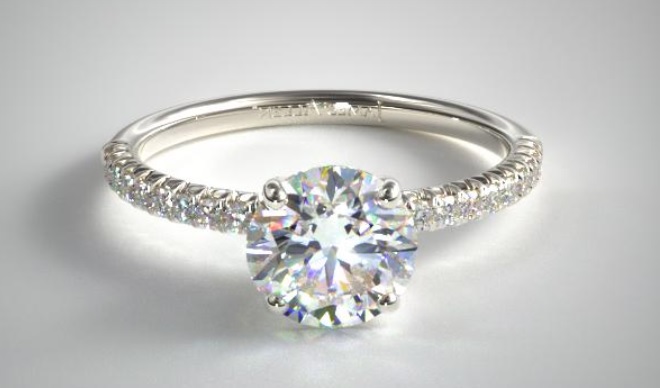

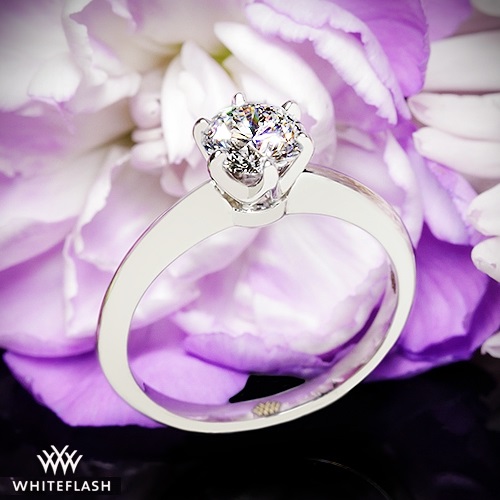

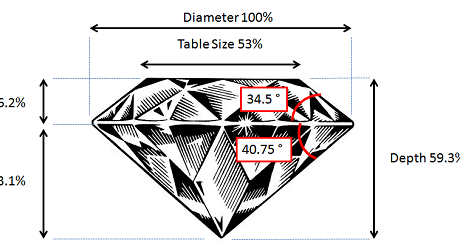
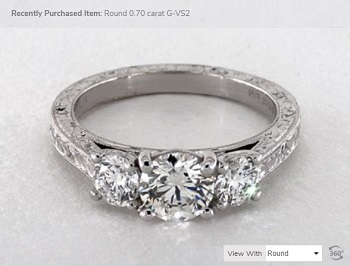
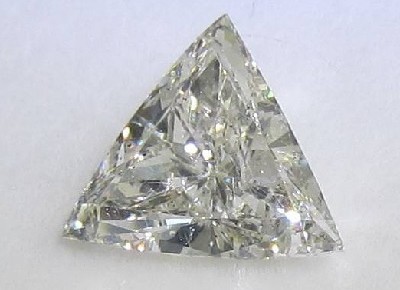









20 Comments
Is the meaning of a solitaire diamond ring the same universally or do different jewelers employ different meanings? I’ve seen some jewelers classify a six prong setting with surprise melee diamonds on the basket of the ring as a solitaire ring. These small diamonds can be seen on the side profile of the ring and there’s a total of 3 diamonds (2 small on the basket and 1 big on the mounting). Why would this be classified as a solitaire?
Traditionally, a solitaire ring would only have a single stone set into a band. Because the term solitaire is so broad, some jewelers may use it to classify ring designs somewhat loosely. If a setting has a couple of small stones in the shoulders or shanks that don’t cause them to be defined as a pave, then they can generally be classified as a solitaire.
As a rule of the thumb, I think you will need to look at the overall design and the type of setting that first comes to your head would be the category it belongs to. For example, semi hidden stones that won’t be seen on first glance would make the setting you describe a solitaire setting type.
I hope this helps and haven’t introduced more confusion.
My name is Luis and I am contacting you because I have been searching for a perfect ring for my future wife that is within my budget. Quite frankly I have become lost searching for the perfect ring whether it be at the local jewelry store, outlet store or online store. I would appreciate any insight that you can provide me.
Budget:
• $1,000 – 1,200 for a good quality 0.3 carat, round cut diamond ring on a traditional solitaire ring. I have found the perfect base online at Bluenile for $360. Link https://www.bluenile.com/build-your-own-ring/14k-white-gold-petite-cathedral-ring-setting_25669.
• I found diamond 1 to go with the ring but it is on the higher end and am wondering if diamond 2 would be just as good of a buy and save some dollars for engraving.
• Diamond 1: https://www.bluenile.com/build-your-own-ring/diamond-details/LD08552152
• Diamond 2: https://www.bluenile.com/build-your-own-ring/diamond-details/LD08216805
Personal preferences/specs:
• I have been solely looking at signature cuts that will provide a GCAL report. I have searched within Bluenile and James Allen’s website. I understand that I will have to sacrifice color and clarity, but I feel weary about doing going below a G and VVS grade. I could use advice in the arena. Outside of looking for the prettier picture when comparing diamonds using the GCAL report, I also do not know what to look for. I am also following a reference that advised to keep the table between 54 – 60% and depth between 59.5 – 62.9% for a round cut diamond. Polish should be very good at best and girdle thin to medium.
More about myself and the recipient:
• I am a new graduate practicing pharmacy in the healthcare field. My future wife is also going to school to practice in a career within the healthcare field. We plan on getting married within the year and I plan on proposing on the 4th of July. Ideally, she had wanted me to spend no more than $400 but I want to do a little more than that in recognizing this special movement in our lives. She prefers simple tastes and would not want anything flashy, which is why her mother and I decided the Solitaire look would be perfect. I also like the symbolism behind the cathedral look as far as protecting the ring.
I would appreciate any help and insight that you can give me Paul.
All the best,
Both the diamonds you picked are well cut for performance. You clearly know what you are doing. As for price differences, it is due to clarity. Both stones are eyeclean and it is up to your personal preference. If the IF is important to you for symbolic reasons, go for the internally flawless diamond.
Otherwise, if you want to save some money, the second diamond would be the choice for practical reasons. Either way, both stones are winners.
Awesome write up! I have something to add as you may have forgotten to list the cathedral or trellis solitaire designs. Also, there are also solitaire rings that make use of basket mountings to provide a further layer of security to keep the stone from dropping off.
Also, can you elaborate on the pros and cons of knife edge rings?
Thanks for your comment. The cathedral setting utilizes arch like shanks to prop the center stone higher much like the aesthetics of an old cathedral. This design feature is distinctly found in the sloping shanks of the ring and the center stone is held in place by prongs.
For a basket setting, it is a form of prong-based design as well except that an additional strip of metal is wrapped around the prongs to make something that resembles a basket. Because of the basket mounting, these settings often consist of 4 prongs only instead of 6.
A cathedral setting allows the diamond to be visible, with slopes on either side to protect the stone. The cathedral setting gets its name from its aesthetic similarities to an old cathedral—its sweeping nature is reminiscent of the vaulted ceilings and pleasing arches of these places of prayer.
Finally, for trellis settings, this is again another type of prong setting where the prongs are designed in a continuous, fluid manner and weave all the way into the shank. So, I hope this clarifies things. Prong settings can be thought of a style of solitaire ring design where many subcategories of different styles are residing.
The pros and cons of a knife edge ring is that it is slim and doesn’t look bulky. And since most knife edge rings are slim (e.g. the Tiffany solitaire ring), they create help create an emphasis on the center stone.
On the other hand, knife edge rings usually have tapering thicknesses and you can dent or nick the setting if you bang your hands against something hard. For first time ring wearers, you may also find the ring’s surface a little uncomfortable as the rest between fingers. But really, it depends on your personal preferences. There are many people who are perfectly fine with a solitaire knife edge ring.
I’m torn between buying a GIA very good cut and larger carat size engagement ring for $3000 or one that is smaller but higher in quality with GIA triple excellent. For solitaire rings, would a cushion cut be suitable as well? I am still making a choice between a cushion and a round cut diamond.
While you can’t go wrong with matching any shapes to the solitaire setting, you shouldn’t compromise the quality of a diamond’s cut. In solitaire settings, you definitely want the diamond stand out as much as possible. It won’t do you any good to purchase a larger but poorly cut stone that doesn’t sparkle well.
To me, the center stone should be considered as the “main course” while the setting is the “complementary dish”. Remember, always go for better cut quality instead of the largest carat size when buying a diamond.
Here’s why solitaire rings are the best. They are simple, minimalistic and low cost! Anyway, are there any benefits of buying 18k yellow gold or 18k white gold for a solitaire ring with an H color diamond? Both types of ring design are priced identically and are available in stock for immediate purchase.
It depends on the look and your jewelry tastes. Click here for a more indepth look into yellow gold vs white gold and you will get a better idea.
When choosing a minimalistic solitaire setting, do the band thickness and material matter? There are some price differences between platinum, 14k and 18k but I am not sure whether the prices are worth it or not.
When choosing a setting, 2 things that you need to consider are the ring’s thickness and its material.
The reason why ring thickness matters is due to the optical illusion it can portray. For example, if you have a small center diamond, it can be made to appear larger by using a tapered shank. Also, thinner bands will also suit people with smaller fingers better because it won’t bog down the finger. You might also want to read this write up I did recently for buying dainty engagement rings. It covers quite a bit of stuff to be aware of and provides you with additional design ideas as well.
When selecting the type of metal used, you need to take into account the color of the center stone you had chosen. For example, white gold or platinum are white colored metals and they blend better with colorless diamonds.
On the other hand, yellow gold or rose gold will cause the diamond to pick up color from its surroundings. That is to say, even if you paid a premium for a D colorless diamond, the stone would still appear with a yellowish tinge when it is mounted!
There are very little physical differences between 14k and 18k gold and it is largely psychological. 14k gold is a tad harder because of the alloys added to it and it is my preference for practicality. Platinum is denser and hence, feels alot heavier than white gold. One other property of platinum is that it is hypoallergenic. If you have sensitive skin, then platinum would be a better choice.
For the full list of differences, you may want to refer to the article here: https://beyond4cs.com/engagement-ring/differences-between-14k-gold-18k-gold-and-platinum/
I was comparing solitaire diamond engagement ring prices and don’t understand why a jeweler can be claiming to sell a one carat tiffany 6 prong ring for $2000 while other jewelers selling a similar ring would cost upwards of $5000. Why is there such a big disparity in prices?
So, how much does a solitaire diamond engagement ring costs? Well, it really depends. Even if we are comparing two 1 carat diamond solitaire rings, the prices can differ significantly. For the rings you are referring to, who graded the diamonds? Based on what you told me, I can pretty much guess that the cheaper ring doesn’t come with a certificated from GIA or AGS.
When buying a diamond ring, the bulk of the costs will come from the center stone and diamonds are priced according to the 4Cs: cut, color, clarity and carat size. Even the shape of the diamond would create a big price difference.
For example, a 1 carat princess cut solitaire ring can cost around $4,000 but a 1ct round cut solitaire ring with similar color/clarity/carat ratings can cost upwards of $6,000. There can even be more subtleties that can create a difference in value.
Anyway, if you are shopping for a 1ct ring, you may also want to refer to our comprehensive guide to selecting a stunning 1ct engagement ring here.
I have a 2ct round solitaire diamond. It was originally set in a wide yellow gold band, 4 prong and sparkled a lot. I had it reset into a thin white gold pave band with 6 prongs, the jeweler had to set in deep into the setting because of its size. I don’t think it has sparkle anymore. My question is: What is the perfect setting/mount for my diamond so that it reflects the most light? 4/6 prong, high/low? white gold/yellow gold? etc… thank you
In general, 4 prong settings allow more light into the diamond and helps with better light performance. The same theory goes for setting a diamond higher. But setting a stone higher comes at a cost as well because it exposes the diamond more and may result in it catching onto things easier. White or yellow gold metals have nothing to do with light return.
After nearly 50 years of marriage, the band on my yellow gold engagement solitaire has nearly worn through. Is it better (or even possible) to restore the band, or would I need to find an entirely new setting for the diamond?
Rebuffing and repolishing should be possible. I don’t see how this cannot be done with a simple reworking job.
It’s out 35th anniversary. I was thinking of a new solitaire for my diamond insert which is about a carat total weight.
The diamond itself is 91 pts GIA Certified and an L. It’s beautiful, no doubt, but I was thinking maybe a 1.25 might be nice.
I also have an Alexanderite solitaire that is bigger than the diamond solitaire.
My question is: does it make more sense to upgrade the diamond, or get a new setting with diamonds for the Alexanderite?
I am not sure what you mean by a diamond insert. But if you have a solitaire stone that’s about 0.91cts in size, I would say that an upgrade to 1.25cts would be very visible in terms of face up size and finger coverage. In terms of settings, it is really up to personal preference. Just know that solitaire settings are not interchangeable between different sizes of center gemstones because the mounting head used needs to be customized to the center stone for security reasons.